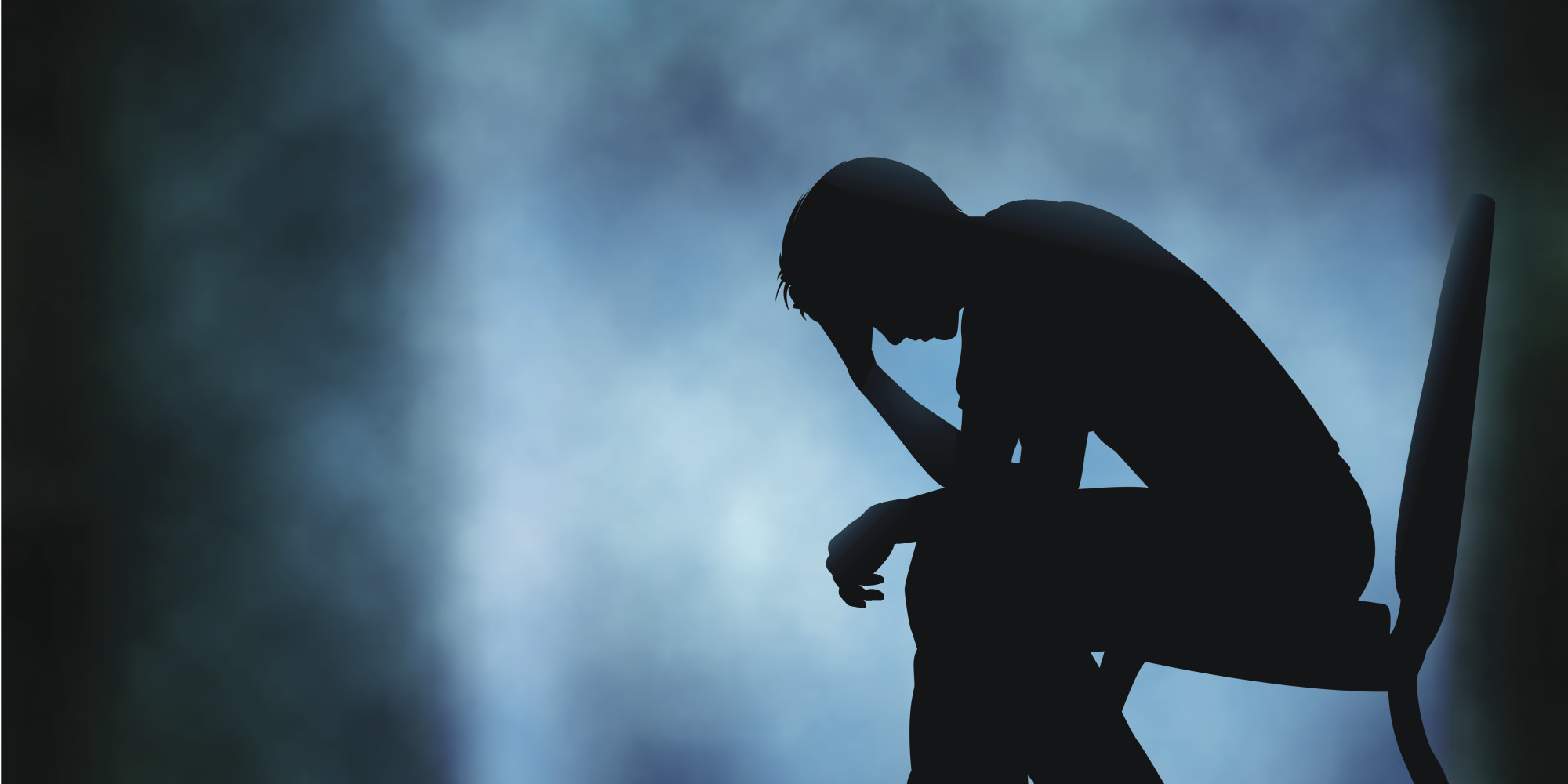Depression can result as an aftermath of a serious illness or loss, but it can also appear without any apparent cause. It’s a condition that affects the entire individual, including the mind, mood, and body. It can cause tremendous anguish for both the patient and those who care about him.
One study found that patients with depressive symptoms felt significantly worse and experienced more limitations than patients with hypertension, diabetes, arthritis, or gastrointestinal disorders. Only patients with angina or advanced heart disease had more difficulty with physical functioning, and none had worse social functioning.
Physicians use checklists like the following to evaluate a patient. A diagnosis of depression is made if the first two major symptoms on the list below have been present nearly every day for the past two weeks, along with two or more of the other symptoms on the list. If the patient experiences three or more additional symptoms, the diagnosis of major depression is made.
Mood: Depressed people are nearly always sad, blue, or worried, although irritability is also common. Anxiety, a sense of dread that something unspecified but terrible is going to happen, often accompanies such a mood.
Loss of interest: Even if a person doesn’t seem to be in a depressed mood, he or she may show loss of interest in things or activities that once gave pleasure.
Depressed thinking: This symptom often takes the form of negative thoughts about oneself, the present, and the future. Depressed people may also have difficulties with concentration, memory, and making decisions.
Self-view: Feelings of worthlessness and hopelessness may develop as depression becomes more severe. People who feel that life is just no longer worth living often have thoughts of suicide.
Sleep disturbances: Depression can interfere with sleep, usually causing problems that range from difficulty falling asleep, or staying asleep, to early-morning awakening with inability to get back to sleep. Oversleeping may also be a symptom of depression.
Loss of energy: No matter how much sleep they get, depressed people are often fatigued and lack energy. They frequently lose interest in sex.
Appetite change: Loss of appetite and weight is common, although in some people the opposite may occur.
Physical discomfort: Dry mouth, nausea, constipation, or diarrhea may become a problem, and some people experience unexplained pains in different parts of the body.
Behavior changes: Some depressed people are unable to dress, eat, or work. Others, however, may feel very depressed but manage to continue functioning. Some are able to put on a smile to cover their feelings; others may cry a great deal.
Because many older people have multiple health problems, many of these symptoms may be ascribed to another illness. In addition, some older people may not experience depressed mood per se, the cardinal sign of depressive illness. Instead, they may suffer loss of appetite, sleeplessness, fatigue, dizziness, memory loss, gastrointestinal complaints, or loss of interest in life. Physical symptoms, such as pain, are also frequently associated with late-life depression, and whether these reflect, contribute to, or mask depression remains a subject of debate.
Other tip-offs of depression occurring later in life include:
– A sad expression
– Slow or agitated movement
– Frequent crying
– Clinging
– Expressions of dependency and helplessness
– Delusions
– Lack of responsiveness
– Lack of variations in mood
Types of Depression
Doctors have divided depression into three broad categories: major depression, dysthymia, and bipolar disorder. Minor depressive episode, another frequently used category, refers to an episode that lasts 2 weeks but is not sufficiently severe to be labeled a major depression. The older term reactive depression which referred to depression brought on by misfortune has fallen out of favor. Instead, physicians are encouraged to evaluate all people with depression for possible treatment, whether or not there’s an obvious good reason for their feelings.
Major depression involves depressive episodes that disrupt one’s ability to sleep, eat, work, and enjoy life. These episodes may appear once or twice, or may occur frequently over the course of a lifetime. According to researchers, two-thirds of those who suffer a major depression, without a history of dysthymia, recover within 1 year of treatment, and nearly 80 percent recover within 2 years.
Dysthymia, also referred to as depressive neurosis, is a less severe but chronic form of depression. Some people with dysthymia continue to function adequately but may suffer painfully low moods for at least 2 years. About one-fourth of such people develop major depression superimposed on a dysthymic disorder, a condition known as “double depression.”
Bipolar disorder, formerly called manic-depressive illness, is a chronic condition in which the afflicted individual cycles between mania and depression. Mania is a mood characterized by sudden, uncalled-for elation, grandiose notions, and increased energy, which may progress to serious impairment in a matter of days. The length of the cycles varies from one individual to another. In its depressive phase, bipolar disorder may not be distinguishable from other forms of depression. Though a manic-depressive disorder can become disabling, it is also among the most treatable of the psychiatric illnesses. Proper medication is essential, and psychotherapy may be helpful.
Seasonal affective disorder (SAD) falls outside the three most common categories. It is a type of depression that occurs during a particular season usually the winter months and is thought to be related to the effects of low levels of light on the central nervous system. Depressions usually begin in October or November and are characterized by increases in sleep, carbohydrate craving, and weight gain, along with the usual depressive symptoms of depressed mood, hopelessness, and social withdrawal. Such depressions usually end in the early spring. People with SAD may be helped by light boxes that simulate longer days, and by antidepressant drugs.
Bereavement and Depression
Depressed feelings are natural after any significant loss, either of a loved one or of a physical function. The loss usually results in a grieving process (called bereavement) that ends, eventually, in personal growth. Most people going through bereavement cope without treatment, although many benefit from counseling or support groups during this period.
The three phases of normal bereavement are
1) shock and disbelief,
2) depression, and
3) resolution.
Shock and disbelief are often associated with feelings of numbness, confusion, and emptiness. The depression phase usually emerges about 4 to 6 weeks after the loss, when support from family and friends typically decreases and the new reality sets in. This stage often lasts at least a year. After the anniversary of the death or loss, the third phase of resolution usually begins, characterized by acceptance and return of normal moods. Resolution often takes about a year.
For some people, however, these responses can become distorted to the point that treatment is required. Signs of abnormal bereavement include overactivity without a sense of loss; development of the same symptoms experienced by the deceased; psychosomatic illness; a change in relationships with friends and relatives; hostility toward a specific person; social withdrawal; self-destructive activities; and agitated depression. A significantly delayed grief reaction is another possible symptom.
The chances of abnormal bereavement increase with low self-esteem, difficulties in prior relationships with parents, multiple previous losses, and lack of family and friends. If the grieving individual was highly dependent on the deceased, the situation is worse. Certain types of death, such as a long terminal illness or an unexpected death, can also complicate matters.
Standard treatments for depression, such as antidepressant drugs, don’t help abnormal bereavement. However, psychotherapy (talk therapy) can make a difference.
If you or anyone you know has had thoughts of death or suicide, and/or has made suicide attempts, seek help immediately. Help can be found through a primary-care physician, a community mental-health center, or an emergency hotline.
Medical Illness and Depression
A number of physical disorders have been directly associated with depression, including malnutrition, thyroid disorders, cancer, cardiovascular disorders, chronic pain, functional disability, vitamin B12 deficiency, and use of some medications. The loss of a sense of control and increased feelings of dependency prompted by physical illness also can lead to depression. People with a past history of a mood disorder appear to have an increased tendency to lapse into depression when ill.
Some physicians believe that depression should be viewed as a dread complication of physical illnesses such as stroke, heart disease, and cancer. Studies reveal depression in about 30 percent of patients with Alzheimer’s disease; 42 percent of hospitalized cancer patients; and 50 percent of stroke patients 6 months after the initial attack.
Untreated depression in someone who’s ill makes the condition worse, delays recovery, and decreases the odds of survival. For example, the American Medical Association found that heart attack survivors who suffer from major depression are three to four times more likely to die within 6 months than are those who are not depressed.
Among terminally ill individuals, depression is strongly correlated with chronic pain, low levels of family support, and the desire to die. However, not all terminal patients who wish to die are depressed. A study of terminally ill patients in the American Journal of Psychiatry failed to find evidence of depression in 42 percent of those with the desire to die.
Nevertheless, when those with depression received treatment and their pain management was improved, their desire to die decreased over time. The authors conclude that substantial proportion of terminally ill patients who express a desire to die could benefit from a trial of treatment for depression.
The Roots of Depression
Genetic factors, life’s adversities, and chemical imbalances in the brain have all been blamed for depression. Most often, the cause seems to be a combination of factors, with some cases triggered by a depressing event and others appearing for no ostensible reason.
Genetic and Biochemical Factors
Depression and bipolar illness do tend to run in families. The siblings, parents, and children of a depressed person have a 20 to 25 percent chance of developing the disorder themselves, compared to a 5 to 6 percent chance among those with no depression in the family. However, a genetic predisposition for depression may not by itself be sufficient to cause the disease. There is increasing evidence that serious depressive illness is often sparked by a significant misfortune.
Research into body and brain chemistry in the last two decades has begun to shed light on the biochemical changes that underlie depression. Chemicals in the brain, called neurotransmitters, have been found to play a role in the regulation of mood. Three neurotransmitters that seem particularly important in depression are norepinephrine and dopamine (both very close relatives of adrenaline), and serotonin. A shortage of these chemicals, either inborn or induced, can bring on depression. Sustaining a major loss or similar adversity is apparently sufficient to send some people into a lasting imbalance.
Researchers have also found that the rise and fall of cortisol, a hormone the body produces in response to stress, anger, or fear, is different between depressed people and those without the problem. People without depression have a high level of cortisol in the morning and declining levels as the day wears on. In people with depression, cortisol peaks earlier in the morning and remains at a plateau during the afternoon or evening. Scientists are still unsure, however, whether this is a cause of depression or an effect.
Psychological Factors
Psychological theories of depression abound. The idea that depression is a counterproductive response to the stresses and frustrations of life is widely held by psychiatrists and counselors, who work to help the patient understand and better deal with the causes. Many psychiatrists regard depression as the outcome of unexpressed or unconscious anger that has been redirected against the self. Since women, in particular, are often taught to suppress any expression of anger, this theory would explain why women are more vulnerable to depression than are men. Advocates of the theory try to bring the causes of anger to the surface, where they can be dealt with and disposed of.
Cognitive therapists, on the other hand, believe that patients develop depression because of thinking errors or unrealistic attitudes about themselves and the world. The three major types of thinking errors are:
- Undervaluing oneself: low self-esteem stemming from the belief that one is inadequate and of little value;
- A negative view of current experience: perceiving yourself as unable to achieve goals and unable to experience pleasure;
- Pessimism: the belief that things will not improve.Cognitive therapists endeavor to help patients understand that there is no evidence for these self-defeating beliefs, and teach more positive thinking patterns.
Psychological theories are difficult to evaluate scientifically, and many remain skeptical as to their validity. However, some research does back up the effectiveness of psychological counseling, and many people continue to find psychotherapy helpful.
Social Factors
Lack of social support has been shown to play an important role in the development of depression, particularly among those who have undergone such high-stress misfortunes as a serious illness or loss of a spouse. Among women, the unmarried and particularly the widowed have elevated rates of depression. On the other hand, the so-called empty nest syndrome, when children leave home, does not increase the rate of depression.
Among older people, the loss of home and independence produces a gigantic jump in the rate of depression. According to the Epidemiologic Catchment Area Study of the National Institutes of Health, depressive symptoms in people over 65 are found in 3 percent of those living in the community and 15 to 25 percent of those living in nursing homes.





